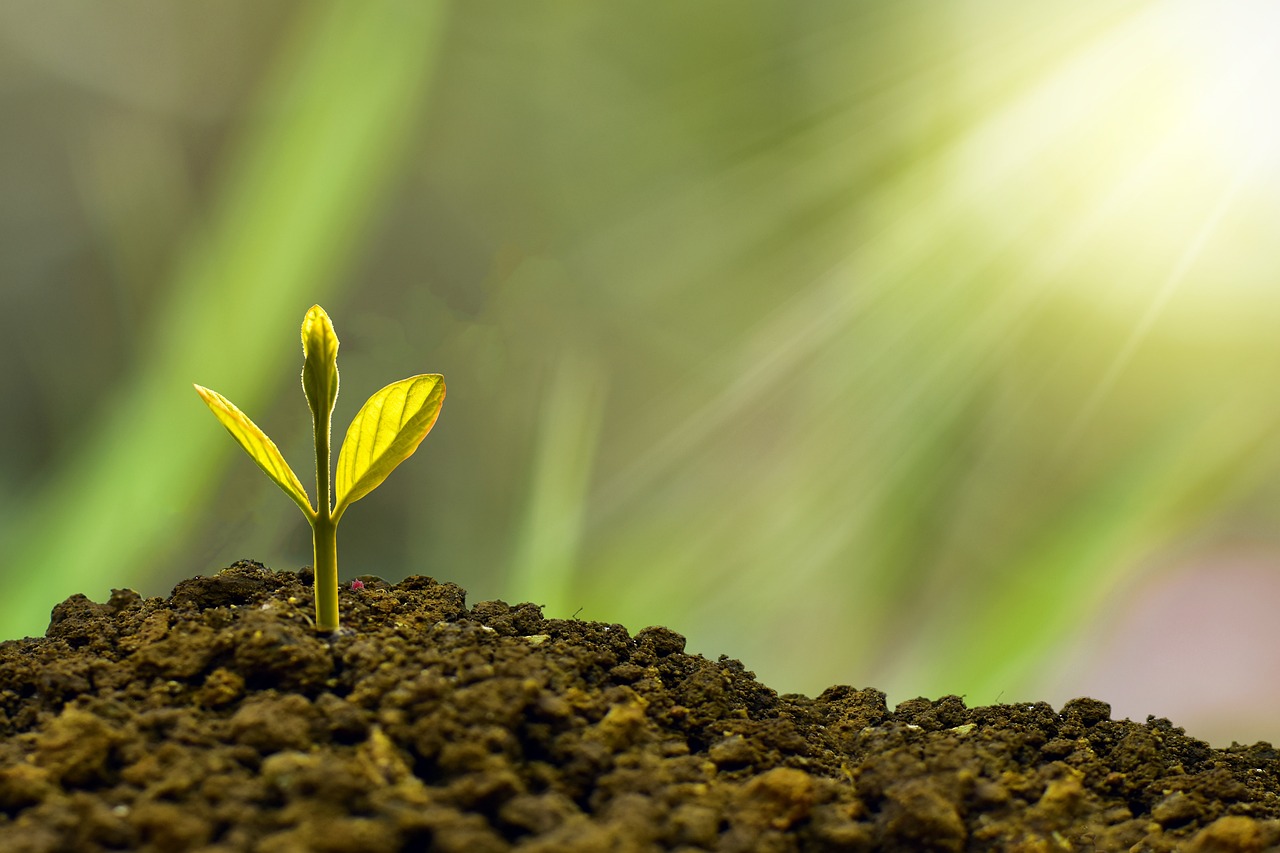What Plants Don’t Like EggshellsAs a gardener, you may have heard about the benefits of using eggshells as a natural fertilizer. However, not all plants respond well to this amendment, and it’s important to understand which ones to avoid using it on. In this guide, we will explore the effects of eggshells on plants and identify the plants that may be negatively impacted by their presence.
Key Takeaways:
- Using eggshells as a fertilizer may not be suitable for all plants.
- Understanding the potential effects of eggshells on plants is crucial in promoting healthy growth.
- There are alternative methods for providing plants with necessary nutrients if eggshells are not optimal.
- Monitoring plant responses to eggshells can assist in determining if it’s a beneficial amendment for specific plants.
- Overall, it’s important to make informed decisions on whether to use eggshells or alternative options for a flourishing garden.
Understanding Eggshells as Fertilizer
Eggshells are increasingly being used by gardeners as a natural source of calcium and other nutrients for plants. Before exploring plants that don’t like eggshells, it is essential to understand their role as a fertilizer and the effects they have on plants.
Eggshells are rich in calcium, which is an essential nutrient for plant growth. In addition to calcium, eggshells contain other nutrients like magnesium, potassium, and phosphorus. When crushed into small pieces, eggshells can be added to the soil to supply these nutrients, resulting in healthier plants.
While eggshells can provide numerous benefits as a fertilizer, it is important to use them correctly. One of the common misconceptions is that eggshells should be added to the soil in large pieces. However, this can lead to slow decomposition and may result in a buildup of calcium in the soil, which can negatively impact plant growth.
It is recommended to crush the eggshells into fine particles, so they decompose faster and release their nutrients effectively. Additionally, it is important to limit the amount of eggshells used in the soil to avoid over-fertilization that can cause harm to plants.
Overall, eggshells can be an effective and natural source of nutrients for plants, but proper preparation and use are essential to reap their benefits.
Plants That Are Sensitive to Eggshells
While eggshells can provide some benefits to certain plants, there are also plants that may be negatively affected by their presence. It’s important to avoid using eggshells as a fertilizer for these plants to ensure optimal growth and health.
Some plants that dislike eggshell amendment include:
- Tomatoes
- Peppers
- Eggplants
- Blueberries
- Apples
These plants have a low tolerance for calcium and can suffer from calcium toxicity when eggshells are used as a fertilizer. Symptoms of calcium toxicity include brown spots on leaves, stunted growth, and reduced fruit production. Avoid using eggshells for these plants and explore alternative fertilization methods.
Negative Impact on Plant Growth
While eggshells can provide some benefits to certain plants, it’s important to note that their use can have a negative impact on plant growth in certain circumstances. One potential issue is that eggshells can take a long time to break down and release their nutrients into the soil. This can cause a buildup of calcium carbonate, which can lead to alkaline soil conditions that are not ideal for many plants.
In addition, the high pH levels of eggshells can also interfere with the uptake of certain nutrients by plants, including iron and manganese. This can result in deficiencies and stunted growth.
It’s also important to note that eggshells may attract pests such as slugs and snails, which can damage your plants. These pests are attracted to calcium-rich environments, so eggshells can be a particularly attractive food source for them.
Overall, it’s important to be aware of the potential negative impacts that eggshells can have on plant growth and health. While they can be a useful fertilizer in certain circumstances, it’s important to monitor your plants’ responses and adjust your fertilization practices accordingly.
Alternatives to Using Eggshells
If you’ve identified plants in your garden that don’t like eggshells, don’t worry! There are alternative methods to provide your plants with the nutrients they need without using eggshells. Some of these alternatives include:
- Compost: Compost is an excellent alternative to eggshells for providing nutrients to your plants. It’s a natural and organic fertilizer that is rich in nutrients and helps to improve soil quality.
- Manure: Manure is another natural fertilizer that provides your plants with the nutrients they need. It can be used on its own or mixed with other organic materials to create a nutrient-rich soil amendment.
- Commercial Fertilizers: If you’re looking for a quick and easy solution, commercial fertilizers are readily available in most garden centers. You can choose from a range of organic and synthetic fertilizers to suit your gardening needs.
It’s important to remember that different plants have different nutrient requirements, and the best way to determine the right fertilizer for your plants is to do some research into their specific needs. You can also consult with a professional gardener or horticulturist for guidance.
Ultimately, it’s up to you to decide on the best method for fertilizing your plants. By understanding the needs of your plants and exploring alternatives to using eggshells, you can provide your garden with the nutrients it needs to thrive!
Understanding Plant Nutrient Requirements
Plants need a variety of nutrients to grow and thrive, including nitrogen, phosphorus, potassium, calcium, magnesium, and sulfur. These nutrients can be obtained through both the soil and external sources of fertilization, such as eggshells. Calcium, in particular, is a vital nutrient for plant growth and development, aiding in the formation of strong cell walls and healthy root systems.
When using eggshells as a fertilizer, it’s important to consider the nutrient requirements of your specific plants. While eggshells do provide calcium, they do not offer significant amounts of other essential nutrients that plants need. As such, it’s important to supplement eggshells with other forms of fertilization or use them in conjunction with nutrient-rich soil.
Additionally, it’s important to note that some plants may not tolerate high levels of calcium. These plants include certain members of the brassica family, such as broccoli and cabbage, as well as plants that prefer acidic soils, such as blueberries and azaleas. In these cases, it may be best to avoid using eggshells as a fertilizer altogether and opt for alternative methods of providing calcium to your plants.
Best Gardening Practices
While eggshells can provide some benefits to certain plants, it’s important to use them in the right way to avoid negatively impacting your garden. Here are some best gardening practices for using eggshells as a fertilizer:
- Crush the eggshells into small pieces to improve their rate of decomposition and nutrient absorption.
- Apply the crushed eggshells directly to the soil around the base of the plant, avoiding contact with the stem or leaves.
- Mix the crushed eggshells into the soil before planting to provide a slow-release source of calcium.
- Use eggshells in conjunction with other fertilizers and soil amendments to provide a balanced nutrient profile for your plants.
- Monitor your plants’ responses to the eggshells and adjust the application rate as necessary.
By following these simple guidelines, you can optimize the use of eggshells as a fertilizer and promote healthy plant growth.
Eggshell Preparations for Optimal Use
Before using eggshells as a fertilizer, it’s important to prepare them properly to ensure optimal use. Here are a few tips to keep in mind:
Washing and Drying
Start by washing eggshells thoroughly to remove any remaining egg residue. Rinse them with warm water and allow them to air dry completely.
Grinding
To ensure the eggshells break down quickly in the soil, it’s recommended to grind them into small pieces. You can use a mortar and pestle, a blender, or a food processor to achieve a fine powder consistency.
Storage
You can store the eggshell powder in a dry, airtight container until you’re ready to use it. Keep it away from sunlight and moisture to prevent clumping.
Application
When applying eggshell powder to your garden, sprinkle it around the base of your plants. Avoid placing it too close to the stems or roots, as it can lead to burning or other negative effects on the plants.
By properly preparing and applying eggshells as a fertilizer, you can provide your plants with the nutrients they need to thrive and promote overall garden health.
Plant-Specific Guidelines
When it comes to using eggshells as a fertilizer, it’s important to consider the specific needs and preferences of your plants. While some plants may benefit from the nutrients found in eggshells, others may be sensitive to their presence. Here are some plant-specific guidelines to keep in mind:
Tomatoes
Tomatoes are often touted as a plant that benefits from eggshells due to their calcium content. However, it’s important to note that tomatoes actually prefer a consistent supply of calcium rather than a sudden influx. To use eggshells for tomatoes, try crushing them finely and adding them to the soil at the beginning of the growing season. This will allow the calcium to be released slowly over time.
Peppers
Peppers, like tomatoes, can benefit from calcium. However, they are also sensitive to high levels of salt, which can be present in eggshells. To use eggshells for peppers, crush them finely and mix with other organic matter such as compost before adding to the soil.
Blueberries
Blueberries prefer acidic soil, and the presence of eggshells can actually raise the pH level, making it less ideal for their growth. Instead of using eggshells, consider using pine needles or other acidic amendments to lower the pH of the soil.
Potatoes
Potatoes are another plant that can benefit from eggshells due to their calcium content. However, it’s important to note that potatoes also prefer a well-draining soil. To use eggshells for potatoes, crush them finely and mix with other materials such as sand or perlite to improve drainage.
Leafy Greens
Leafy greens such as lettuce and spinach don’t typically require the high levels of calcium that other plants do. Instead of using eggshells, consider using compost or other organic matter to provide the necessary nutrients.
Remember to observe the response of your plants when using eggshells as a fertilizer. If you notice any negative effects or signs of sensitivity, consider exploring alternative options. By being mindful of your plants’ needs, you can help them thrive and reach their full potential.
Monitoring Plant Responses
When introducing eggshells as a fertilizer, it’s important to monitor your plants’ responses to ensure they are not negatively impacted. Some plants may show sensitivity or aversion to the presence of eggshells, and it’s important to be aware of this.
One way to monitor your plants is to observe their growth and development. If you notice any discoloration, stunted growth, or other signs of distress, it may be a sign that the eggshells are not working well with those particular plants.
Another way to monitor your plants is to test the pH levels of your soil. Eggshells can raise the pH levels of your soil, which may not be ideal for certain plants. You can purchase a soil testing kit from your local gardening store to get an accurate reading of your soil’s pH levels.
If you notice any negative effects on your plants, it’s important to make adjustments to your gardening practices. Consider alternative fertilization methods, or adjust the amount and frequency of eggshell use. By monitoring your plants’ responses and making necessary adjustments, you can optimize the use of eggshells and promote overall plant health in your garden.
Improving Plant Health and Growth
If you have identified plants in your garden that are negatively affected by eggshells, fear not! There are still ways to promote the health and growth of your plants.
First, consider alternative methods of providing nutrients to your plants. There are organic and chemical fertilizers available that may be better suited to the specific needs of your plants.
Additionally, ensuring that your plants are receiving adequate water and sunlight is crucial for their overall health. Make sure to water your plants regularly, especially during dry spells, and place them in areas where they can receive sufficient sunlight throughout the day.
Another approach is to use the eggshells in a different way. Instead of using them as a direct fertilizer, you can grind the shells into a fine powder and add them to your compost. This will help enrich the soil and provide the necessary nutrients to your plants in a more balanced way.
Lastly, regularly monitoring your plants’ responses to any fertilization or amendment techniques is key. Keep track of their growth and adjust your methods accordingly to ensure optimal plant health and growth.
Conclusion
As we’ve explored in this comprehensive guide, using eggshells as a fertilizer can have both positive and negative effects on plant growth. While some plants benefit from the calcium and other nutrients provided by eggshells, others may not thrive due to their sensitivity or aversion to their presence in the soil.
To determine whether using eggshells is right for your garden, it’s important to understand the specific nutrient requirements and sensitivities of your plants. By monitoring their responses and making adjustments accordingly, you can promote healthy growth and overall plant health.
Remember, there are alternative fertilization methods available if your plants don’t like eggshells. Consider exploring these options to ensure optimal growth and flourishing in your garden.
Thank you for reading this Green Thumb Guide on what plants don’t like eggshells. We hope it has provided valuable insights and helpful tips for your gardening practices. Happy planting!
FAQ
What plants don’t like eggshells?
While most plants can benefit from the nutrients in eggshells, certain plants may be sensitive to their presence. Plants like blueberries, tomatoes, and peppers tend to prefer acidic soil and may not thrive when eggshells are used as a fertilizer.
What are the effects of eggshells on plants?
Eggshells can provide calcium, potassium, and other nutrients to plants, improving soil quality and promoting healthy growth. However, the alkaline nature of eggshells can increase soil pH, which may not be suitable for all plants.
How can I avoid using eggshells for certain plants?
If you have identified plants in your garden that don’t like eggshells, you can avoid using them as a fertilizer. Instead, consider using alternative methods like compost, organic fertilizers, or specific fertilizers formulated for the needs of those plants.
Can eggshells have a negative impact on plant growth?
In some cases, yes. The alkaline nature of eggshells can raise soil pH, which may inhibit the absorption of certain nutrients and hinder plant growth. Additionally, plants that prefer acidic soil may not thrive when exposed to eggshells.
What are the alternatives to using eggshells for plants?
If your plants don’t like eggshells, you can consider using alternatives such as compost, coffee grounds, seaweed, or specific organic fertilizers. These options can provide nutrients without affecting soil pH.
How do eggshells fit into plant nutrient requirements?
Eggshells contain calcium, which is an essential nutrient for plants. However, they should be used as a supplement rather than the sole source of nutrients. Plants have diverse nutrient requirements, and it’s important to provide a balanced diet through appropriate fertilization methods.
What are the best gardening practices when using eggshells?
When using eggshells as a fertilizer, it’s important to crush them into small pieces to enhance their breakdown and nutrient release. It’s also advisable to incorporate them into the soil rather than placing them directly on top. Additionally, regular soil testing and monitoring can help ensure optimal plant health.
How should I prepare eggshells for optimal use?
To prepare eggshells for use as a fertilizer, rinse them thoroughly to remove any residual egg, then allow them to dry completely. Once dry, crush the eggshells into small pieces, ideally using a blender or mortar and pestle, before incorporating them into the soil.
Are there plant-specific guidelines for using eggshells?
Yes, different plants have different preferences and requirements when it comes to fertilization. Some plants may benefit from the calcium-rich content of eggshells, while others may be sensitive to their alkaline nature. Researching and understanding the specific needs of your plants is essential for successful fertilization.
How can I monitor my plants’ responses to eggshells?
To monitor your plants’ responses to eggshells, observe their overall health, growth rate, and leaf discoloration. If you notice any negative effects, such as stunted growth or yellowing leaves, it may indicate that the plants are not responding well to the eggshells. Adjustments in fertilization methods may be necessary.
Are there additional tips for improving plant health and growth?
Yes! Beyond fertilization, factors like proper watering, adequate sunlight, and pest control play vital roles in plant health and growth. Paying attention to these aspects, along with providing appropriate nutrients, can contribute to a thriving garden.




